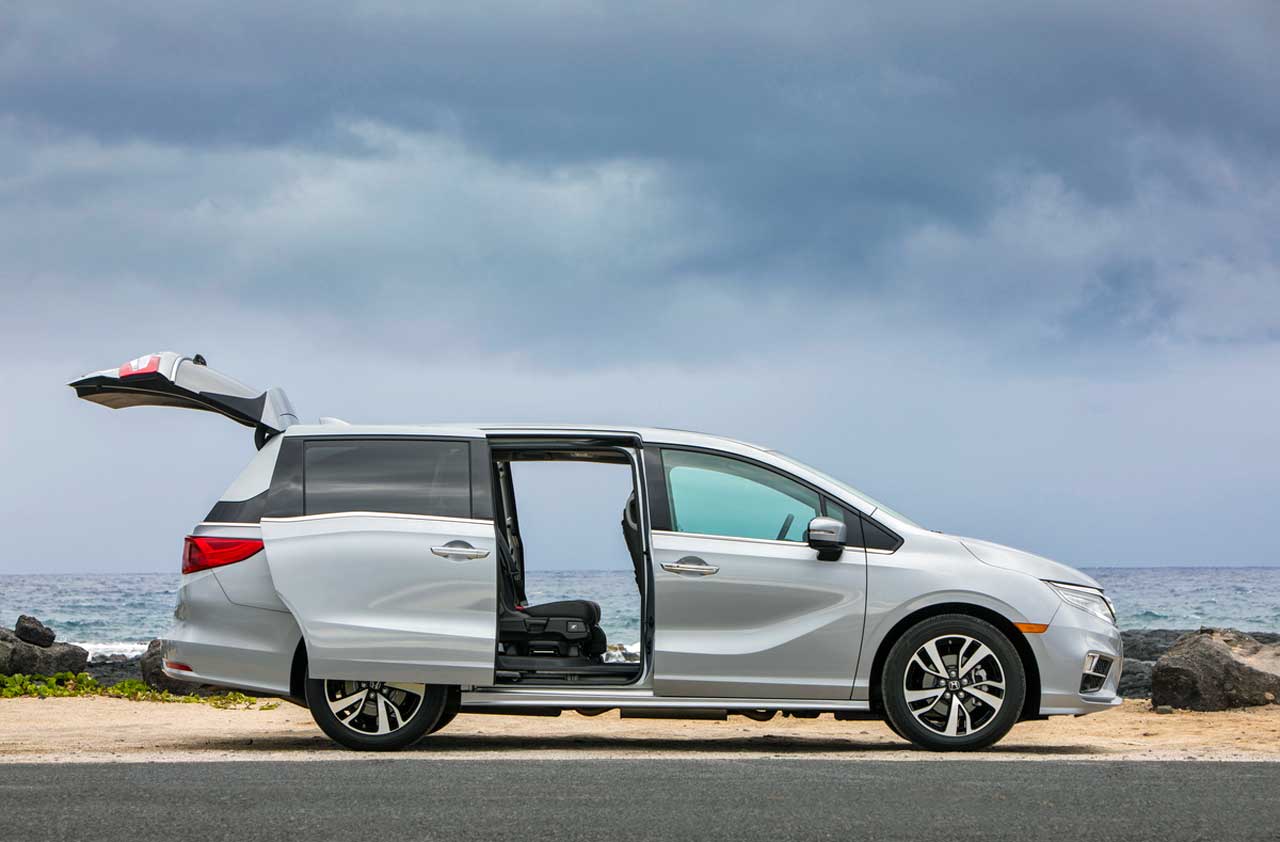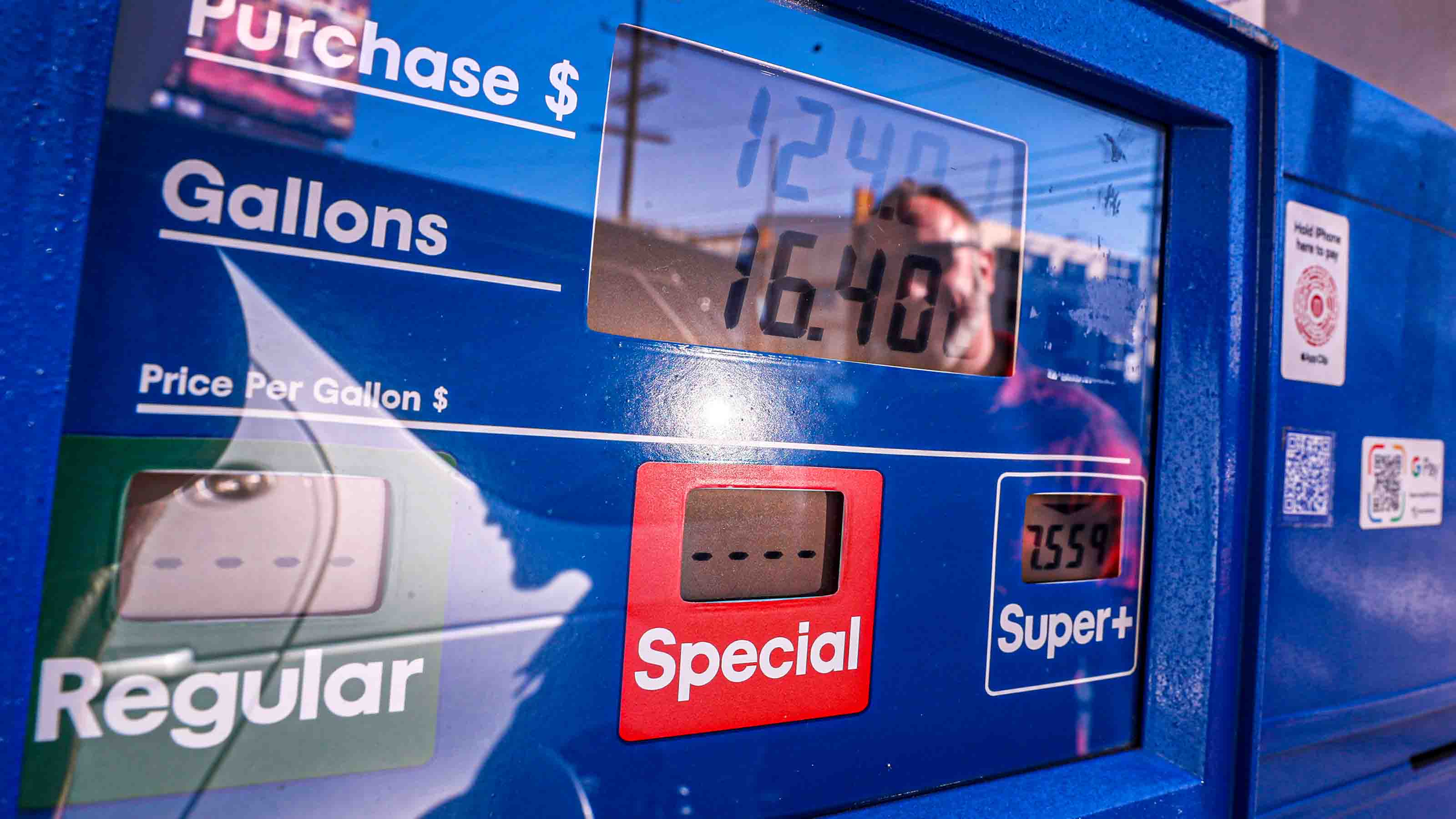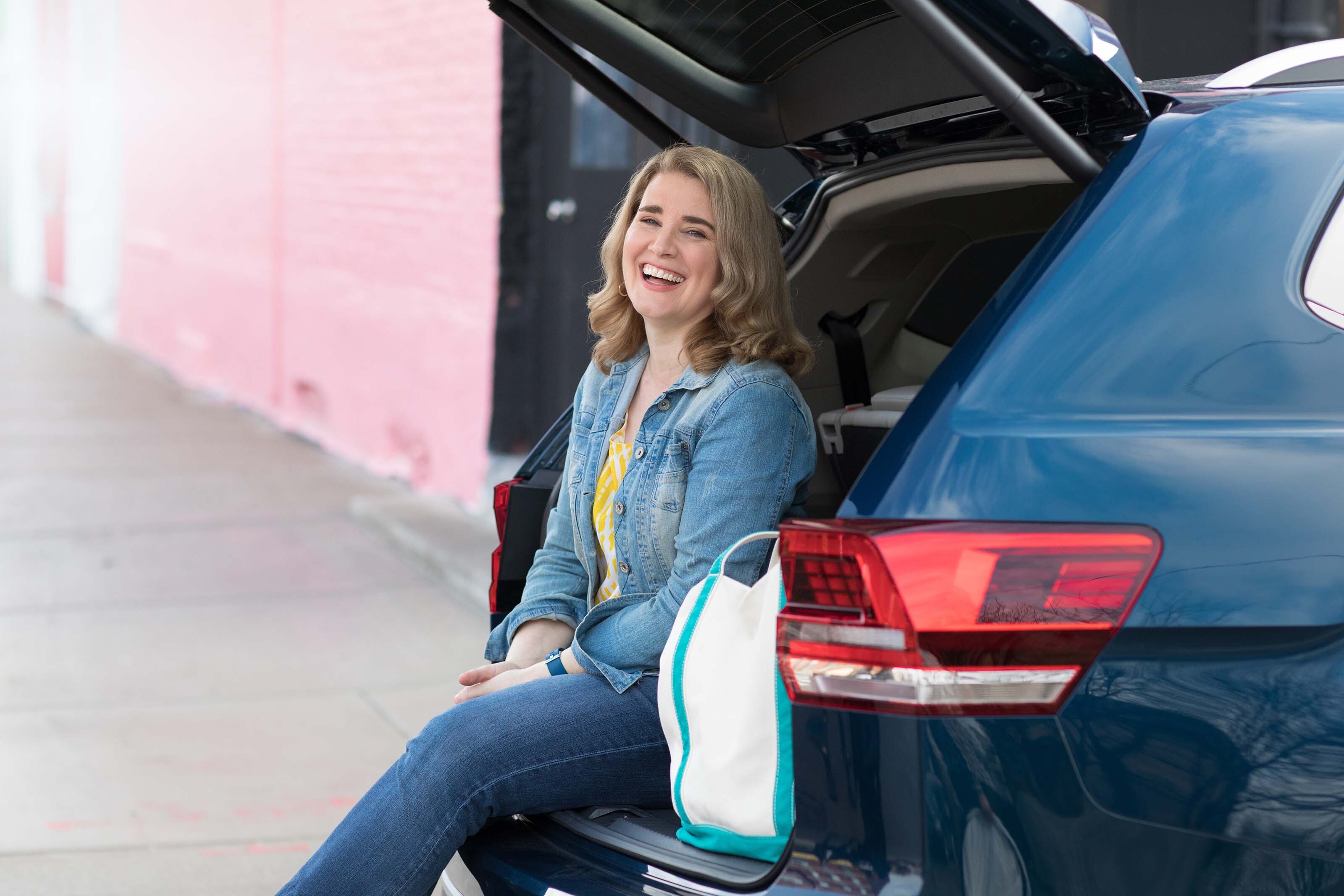Minivans: What’s Not to Like?
The minivan has been unfairly displaced by the three-row SUV as the family hauler of choice.


We were on our way to peak minivan in 1995 when, in the comedic thriller Get Shorty, John Travolta’s character Chili Palmer kept passing off his rental Oldsmobile Silhouette as the “Cadillac of minivans” (probably the movie’s most memorable line). Back then, just about every major American and Japanese carmaker offered a minivan. Even the final iteration of the Volkswagen bus was still sold here.
Twenty-five years later, you need only one hand to count the minivans on the market in the U.S. Why? Demographic shifts, in part. But mostly, the decline stems from the emergence of three-row SUVs. Minivan sales have been dwindling for decades as drivers ditch the symbol of suburban surrender, the automotive equivalent of drawstring sweatpants, for something they like to call their “truck.”
But having spent Thanksgiving week hauling my extended family around town in a 2020 Honda Odyssey (MSRP $34,690, EX trim*), I am again reminded that when it comes to putting a lot of humanoids in a box and taking them somewhere, you just can’t beat a minivan. Most of the credit goes to the sliding doors. The ability to not just unlock but open these giant access ports remotely is huge. While still fussing with locking up the house, I could pop open the doors and let the nieces and nephews scramble into the back row, as the elder generation followed into the middle row with far less acrobatics (and grumbling) than when entering any vehicle in my own fleet (which, yes, includes a three-row SUV).

Sign up for Kiplinger’s Free E-Newsletters
Profit and prosper with the best of expert advice on investing, taxes, retirement, personal finance and more - straight to your e-mail.
Profit and prosper with the best of expert advice - straight to your e-mail.
My friend Jody Danforth Root, who considers herself a big van fan, notes another plus. “My van’s sliding doors meant there was never a wind gust or thoughtless kid that blew the door open, dented the car next to us, and left me paying for someone’s body work,” as happened with her other vehicle, a GMC Yukon Denali, a big ol’ SUV.
The minivan achieves a space advantage by devoting its dimensions (height in particular) to interior volume.
The minivan’s other main advantage (again, over three-row SUVs) is that the third row is bigger, with room enough for average-size adults, even. Honda’s largest SUV, the Pilot ($34,430, EX trim), provides a good point of comparison. The Odyssey and Pilot share considerable DNA, use the same engine and are built in the same Alabama factory. But for a small increase in overall length (7 inches), the Odyssey provides a significantly more commodious third row. Check out the table here:
| Third-row dimensions | Leg | Shoulder | Hip | Head | Cargo* |
|---|---|---|---|---|---|
| Honda Odyssey minivan | 38.1 | 60 | 48.4 | 38.3 | 32.8/140.7 |
| Honda Pilot SUV | 31.9 | 57.6 | 44.6 | 38.9 | 16.5/83.8 |
| Minivan advantage | +6.2 | +2.4 | +3.8 | -0.6 | +16.3/+56.9 |
* all seats up/all seats down
The minivan achieves this space advantage by devoting its dimensions (height in particular) to interior volume. An equivalent SUV must accomodate big tires, ground clearance and long-travel suspension to provide some off-road ability.
If you expect to shuttle kids until they can drive places on their own, remember that 15-year-olds can get pretty big, big enough to complain about third-row exile in plenty of SUVs. But whoever gets the back row in the Odyssey should be fairly content: Most Odysseys offer not just cup holders and vents, but also power outlets. Should squabbling break out in back anyway, the Touring and Elite versions of the Odyssey let you actually see what the miscreants are up to via Honda’s Cabin Watch system—an overhead camera that covers the back two rows and displays the image on the dashboard’s main screen. It even has a mode that works in the dark (a feature that borders on creepy).
Is looking at the screen safer than turning your head around and threatening to PULL OVER RIGHT NOW? Perhaps. And, if the passengers happen to be wearing the wireless headphones that come with the Odyssey’s highest trims, you can push another button to interrupt the sound and yell at them right through the headphones.
I’m uncool, and I know it.
So, what’s not to like? That image problem. It runs deep. To go back to the movies: When undercover cop/master car racer Brian O’Conner (Paul Walker) becomes domesticated in Furious 7, what do the filmmakers put him in to take the kid to school? A blue Chrysler Town & Country. And he can’t find the door switch. Plenty of women, too, are anti-van. I know, because I’m married to one. It’s not just that my wife would never be caught dead driving one; she thinks less of me for liking them.
That attitude is reflected in sales. Looking back 15 years, the market share of minivans has been roughly cut in half, as buyers have defected to the ever-expanding array of SUVs. Will the minivan follow the station wagon to near extinction in the U.S.? Jessica Caldwell, executive director of industry insights at Edmunds.com, doesn’t think so. She sees the market share hitting a floor of about 2%—a niche, but one with a huge degree of loyalty. “Because it’s culturally not cool to have a minivan, people feel obliged to defend their decision to go minivan,” Caldwell said.
The Odyssey I drove is one of only four (or maybe five) minivans you can buy today. Back when Kiplinger’s was handing out a variety of annual awards, including Minivan of the Year, the Odyssey was the most common winner, and I think it still owns that spot, in part because Honda did a significant redesign in 2018.
The rest of the field. The number-two van, then and now, is the Toyota Sienna ($34,385, LE trim). The Sienna has been left largely untouched since 2011, though a redesign is expected with the 2021 model. As a result, it trails the Odyssey (and others) in the demanding safety tests performed by the Insurance Institute for Highway Safety. But the Sienna can claim a significant niche-inside-a-niche: It’s available with all-wheel drive, which takes out one of the main reasons people claim they need an SUV. (Minivans, of course, are strictly on-road vehicles, but equipped with winter tires, they might be a safer bet overall in the snow than an all-wheel-drive SUV with all-season tires.)
Fiat Chrysler, which got the minivan party started in 1984 with the Plymouth Voyager/Dodge Caravan twins, has been playing a curious game: In 2016, it introduced the Chrysler Pacifica ($33,745, Touring), an all-new design that replaced the long-in-the-tooth Town & Country. However, it has kept a variant of the older model in production as the Dodge Grand Caravan ($27,040 for a 2019 SE model; 2020 pricing hasn’t been announced yet), mostly to satisfy fleet sales, according to Edmunds’ Caldwell.
Chrysler also owns its own niche-within-a-niche: You can buy the Pacifica Hybrid ($39,995, Touring), a plug-in model that can drive up to 33 miles on electric power with a full charge. Further complicating the situation: For 2020, Chrysler is offering a Chrysler Voyager ($26,985, L). It’s basically a low-trim (cloth seats and steel wheels) version of the Pacifica.
And then there’s the slow-selling Kia Sedona ($33,500, EX), whose most distinctive feature is its styling. The stepped-up third side window and long, low nose evoke a large crossover. But the sliding-door handles still give it away. Sedonas depreciate quickly, so they’re best bought used.
Finally, I’ll mention a couple of outliers that have sliding doors, but don’t quite fit the traditional minivan parameters:
- The Mercedes-Benz Metris ($35,580). With rear-wheel drive and an overall design aimed at fleet service, it’s probably best thought of as smaller version of the well-known Sprinter vans, rather than the, uh, “Mercedes of minivans.” If, however, your argument for choosing an SUV is that you need to tow something, you might have a look at the Metris, as its towing capacity is about 50% higher than conventional front-wheel drive minivans.
- The Ford Transit Connnect ($29,135, XLT) is a mini-minivan built in Spain. While you can buy a model with seating for seven, most of these end up as commercial vehicles hauling stuff rather than people. (They’re popular with dog walkers for their low step-in height.)
*Manufacturer’s suggested retail price does not include delivery charges nor reflect discount programs that may be in effect.
Get Kiplinger Today newsletter — free
Profit and prosper with the best of Kiplinger's advice on investing, taxes, retirement, personal finance and much more. Delivered daily. Enter your email in the box and click Sign Me Up.

In his former role as Senior Online Editor, David edited and wrote a wide range of content for Kiplinger.com. With more than 20 years of experience with Kiplinger, David worked on numerous Kiplinger publications, including The Kiplinger Letter and Kiplinger’s Personal Finance magazine. He co-hosted Your Money's Worth, Kiplinger's podcast and helped develop the Economic Forecasts feature.
-
 Stock Market Today: Stocks Gain on Tech, Auto Tariff Talk
Stock Market Today: Stocks Gain on Tech, Auto Tariff TalkThe Trump administration said late Friday that it will temporarily halt tariffs on some Chinese tech imports.
By Karee Venema
-
 Sam's Club Plans Aggressive Expansion: Discover Its New Locations
Sam's Club Plans Aggressive Expansion: Discover Its New LocationsSam's Club expansion plans will open up to 15 new stores each year. Learn where they plan to open in 2025.
By Sean Jackson
-
 Gas-Saving Tips That Actually Work
Gas-Saving Tips That Actually WorkThese are gas-saving tips that will actually work for you and your car this year.
By David Muhlbaum
-
 Want to Lease an EV? The Tax Credit 'Loophole' for That Could Go Away Soon
Want to Lease an EV? The Tax Credit 'Loophole' for That Could Go Away SoonTax Credits If you are deciding whether to lease or buy a car, here's what you need to know about the EV lease tax credit.
By Kelley R. Taylor
-
 Car Buying in a Topsy-Turvy Market
Car Buying in a Topsy-Turvy MarketYou need a new car? Good luck with that! What should you do? We've got some answers.
By Katherine Reynolds Lewis
-
 Watch Out for Flood-Damaged Cars from Hurricane Ian
Watch Out for Flood-Damaged Cars from Hurricane IanBuying & Leasing a Car In the wake of Hurricane Ian, more flood-damaged cars may hit the market. Car prices may rise further because of increased demand as well.
By Bob Niedt
-
 Car Buyers: The 3-Day Grace Period Is Just a Myth!
Car Buyers: The 3-Day Grace Period Is Just a Myth!Buying & Leasing a Car Many car buyers think they have three days after making a purchase to return a car. Here’s where they’re going wrong, and what they should do instead to get a decent used car.
By H. Dennis Beaver, Esq.
-
 PODCAST: Car-Buying in an Inflated Market with Jenni Newman
PODCAST: Car-Buying in an Inflated Market with Jenni NewmanBuying & Leasing a Car With cars both scarce and expensive these days, what to do if you want – or need – a new ride? Car-buying strategist Jenni Newman of Cars.com shares some tips. Also, more on the magical 9% savings bond.
By David Muhlbaum
-
 The "Real" Cost of Buying a Car
The "Real" Cost of Buying a CarFeature Atlanta Falcons linebacker and Kiplinger contributing editor Brandon Copeland illustrates how car prices are far more than meets the eye.
By Brandon Copeland
-
 How to Get a Car Deal in This Market
How to Get a Car Deal in This MarketBuying & Leasing a Car Low inventories mean it’s hard to haggle on price, but you can still negotiate on financing when shopping for a new or used car.
By Rivan V. Stinson